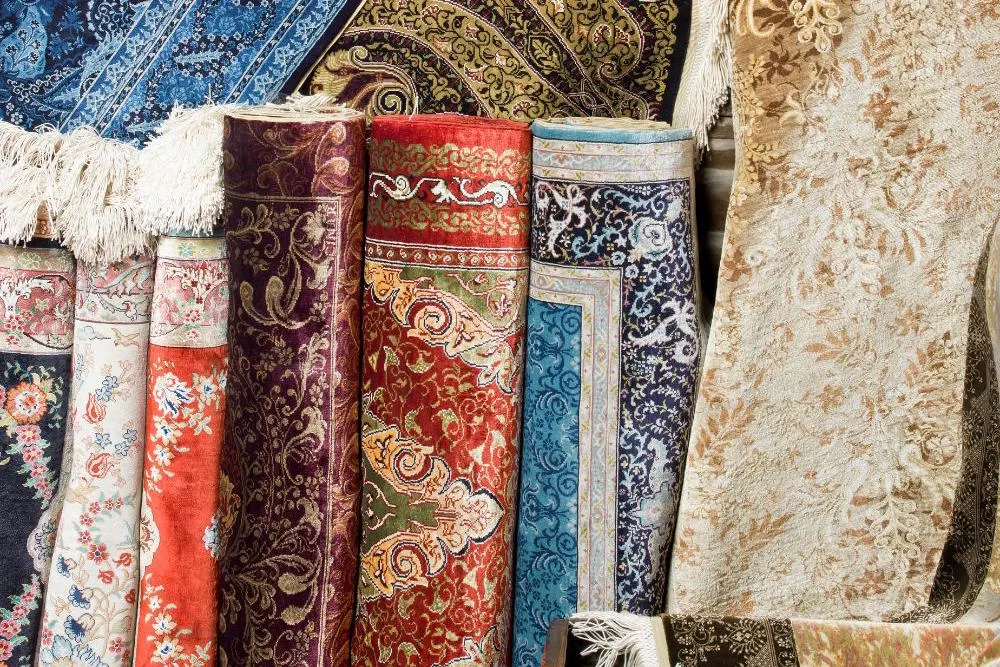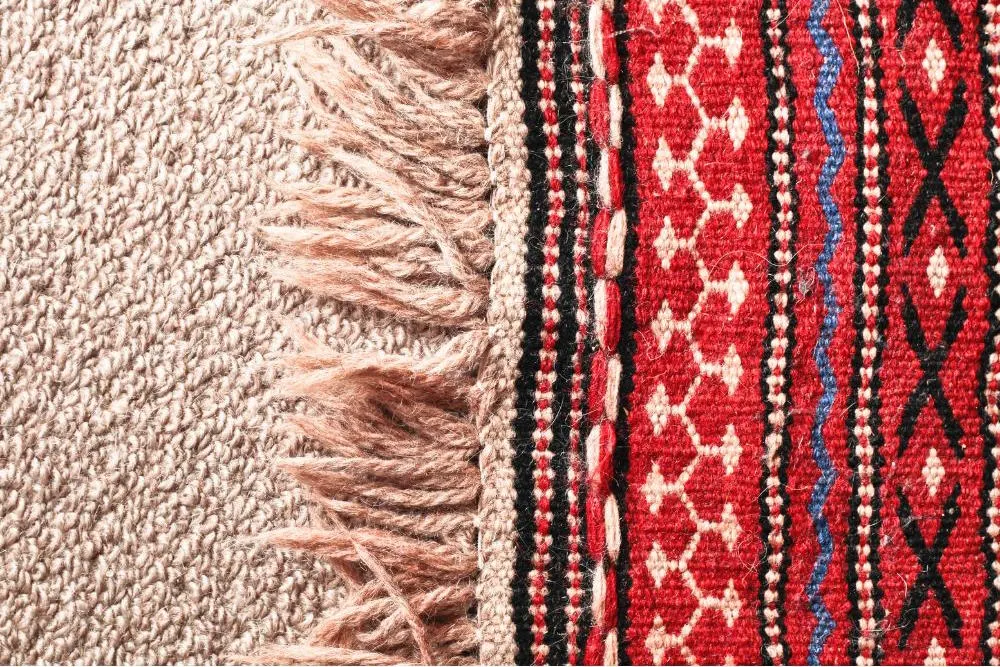Becoming a rug dealer can be a lucrative business venture, as beautiful and well-crafted rugs remain in high demand in households and commercial spaces alike.

By dealing in rugs, you have the opportunity to be part of a creative industry filled with culture, history, and art. As you embark on this journey, you’ll face some key choices that will shape your unique business model and help you stand out from the competition.
One of the first decisions you’ll need to make as a budding rug dealer is whether to specialize in antique rugs or opt for selling newly manufactured ones. Each choice bears its benefits and challenges, ultimately requiring a clear understanding of your target market and personal preferences. While antique rugs can attract collectors and those seeking prized conversation pieces, newly manufactured rugs offer more variety in styles, colors, and designs, appealing to a broader clientele.
Another important aspect of becoming a successful rug dealer is to establish connections with suppliers and manufacturers, which will enable you to provide the best quality products to your customers. In addition, you’ll want to develop relationships with interior designers, architects, and retailers who can recommend and promote your rugs to their own client base. By focusing on these fundamentals and delivering exceptional customer service, your rug dealership will start on the right foot and flourish in the world of home decor.

Understanding the Rug Industry
The rug industry is a vast and diverse market, with a rich history and a wide variety of products. As a rug dealer, it is essential to have a strong grasp of the industry’s different aspects. This understanding includes the different types of rugs available, as well as their historical significance in trade and design.
Types of Rugs
Rugs come in many shapes, sizes, materials, and styles, making it essential for a rug dealer to familiarize themselves with the various options available. Some of the most common types include:
- Handmade rugs: Often considered the most valuable, these rugs are meticulously crafted by skilled artisans. They can take months or even years to complete, depending on their intricacy and size.
- Machine-made rugs: These rugs are created using modern machinery, making them more affordable and accessible to a wider audience. They often mimic the appearance of handmade rugs but lack their unique, one-of-a-kind character.
- Area rugs: Designed to cover a specific section of a room, area rugs come in various shapes, colors, and patterns. They can help define spaces, provide insulation, and add style.
- Indoor-outdoor rugs: Made from durable materials, these rugs are designed to withstand the elements and can be used both inside and outside the home or commercial spaces.
By understanding the various rug types, a dealer can better serve their customers and help them find the perfect rug for their needs.
History of Rug Trading
The history of rug trading is a fascinating journey that spans centuries and continents. With roots in ancient Persia, the popularity of rugs spread throughout the world, becoming a symbol of luxury and artistry. As a rug dealer, it is essential to appreciate this history as it helps provide context for the rugs they sell and enriches their knowledge.
Some key historical moments in rug trading include:
- Ancient Persia: Often considered the birthplace of rug making, Persian rugs date back to the 5th century BCE. These rugs were highly sought after for their intricate designs and skilled craftsmanship.
- Silk Road: As traders ventured along the Silk Road, rugs became a valuable commodity exchanged for other goods. This trade expanded the rug industry and led to the development of new designs and styles inspired by different cultures.
- European influence: In the 17th and 18th centuries, European merchants and travelers brought rugs back from their expeditions, further popularizing them in the western world.
This brief overview of the rug industry’s history highlights the importance of understanding the context and evolution of rug trading for a successful rug dealer. By enhancing their knowledge, they stand to better appreciate the varied offerings in the market and make informed decisions in their business endeavors.
Essential Skills and Knowledge
Evaluating Rug Quality
When it comes to becoming a successful rug dealer, one of the most important skills you need to master is the ability to evaluate rug quality. High-quality rugs will differ from low-quality rugs in numerous ways. These include factors such as the choice of materials, the density of the knots, and the overall design and craftsmanship. Learning how to identify these differences will ensure that you can offer your customers the best possible selection of rugs.
To begin with, you should familiarize yourself with the various types of materials used in rug making. Top-quality rugs are typically made from natural fibers like wool, silk, or cotton. Pay close attention to the texture of these materials, as they will significantly influence the rug’s overall feel, durability, and value. Different rug types, like Persian rugs, may also have distinctive characteristics that set them apart from other styles.
In addition, assessing a rug’s knot density is crucial since it affects both its appearance and longevity. A higher knot density usually indicates a more intricate design and a more durable rug. To determine the knot density, inspect the back of the rug and count the number of knots per square inch or centimeter.
Knowledge of Rug Origins
Another essential skill for a rug dealer is having a deep knowledge of rug origins. This involves understanding the various styles, manufacturing techniques, and cultural traditions associated with rugs from different regions. For example, as mentioned earlier, Persian rugs have specific attributes that set them apart from other types of rugs.
Visiting local rug dealers and asking lots of questions can be a great way to build your knowledge base in this regard as advised. With time, you’ll become more adept at recognizing the subtle differences between rugs from various countries and regions. This understanding will enable you to provide your customers with a diverse and interesting range of rugs, increasing the appeal of your dealership and the likelihood of success.
Aside from visiting local rug dealers, you may also consider seeking training or employment opportunities with rug manufacturers. This will expose you to different aspects of rug production and help you gain a better understanding of the business in general.
In summary, fundamental to becoming a successful rug dealer are the skills and knowledge related to evaluating rug quality and understanding rug origins. This will ensure that you can offer your customers a wide variety of high-quality rugs, making your business more appealing and ultimately successful.
Setting Up Your Rug Business
Developing Relationships with Suppliers
One of the first steps in setting up your rug business is to connect with suppliers. These are the businesses that will provide you with the rugs you’ll sell to your customers. Start by researching different rug manufacturers and wholesalers, and then reach out to them to discuss partnership opportunities. Building solid relationships with suppliers is essential for a successful rug business, as they may offer valuable advice and support in addition to providing high-quality products. Remember to always maintain a professional and friendly demeanor when interacting with your suppliers.
Securing Initial Investment
Before opening your rug business, you’ll need to secure initial investment. This could come from your personal savings, a loan, or even an investment from friends or family members. To impress potential investors, prepare a comprehensive and well-thought-out business plan that demonstrates your understanding of the rug market and clearly outlines your growth strategy. Having a solid business plan also helps you determine how much initial investment you’ll need to cover startup costs like inventory, marketing, and operational expenses.
Creating a Bank Account
Lastly, you should create a business bank account specifically for your rug business. This is essential for managing your finances and keeping your personal and business affairs separate. To open a business bank account, you’ll typically need to provide documentation such as your business license and tax identification number. If you’re unsure about which bank to choose, consider seeking advice from fellow business owners or a trusted financial advisor.
By following these steps, you’ll be well on your way to establishing a successful rug business. Take the time to build strong relationships with suppliers, secure the necessary investment, and set up a dedicated bank account, as these foundation-building steps will aid in your rug business’s long-term success.
Building Your Customer Base
Attracting and Retaining Customers
To become a successful rug dealer, it’s vital to attract and retain a loyal customer base. One way to attract customers is to identify your target market and create a customer-centric approach to growth. Understand who your potential customers are, what they need, and provide them with personalized services and solutions source.
Another strategy is to solicit feedback from your customers. Positively respond to their needs by using their feedback to improve your products and services source. In addition, showcase positive feedback in your marketing materials to attract new customers.
To retain customers, focus on building a reputation as a knowledgeable and professional rug dealer. Educate your customers, answer their questions, and provide valuable advice source. Offer a diverse range of carpet samples with different textures and colors, which will give your customers variety and help them make informed decisions source.
Expanding Your Reach
Growing your customer base also involves expanding beyond your current clientele. Here are some strategies to consider:
Networking: Attend trade shows, conferences, and industry events to meet potential customers and business partners. Establish relationships with interior designers, architects, and retailers who can refer clients to you.
Digital marketing: Utilize online platforms like social media, email marketing, and search engine optimization (SEO) to boost your online presence and reach a wider audience.
Partnerships: Collaborate with other businesses, online platforms, or wholesale dealers to increase your visibility and reach source.
Remember that growing your customer base is an ongoing process. Continuously evaluate your strategies, make adjustments as needed, and stay committed to providing exceptional service and products to attract and retain customers.
